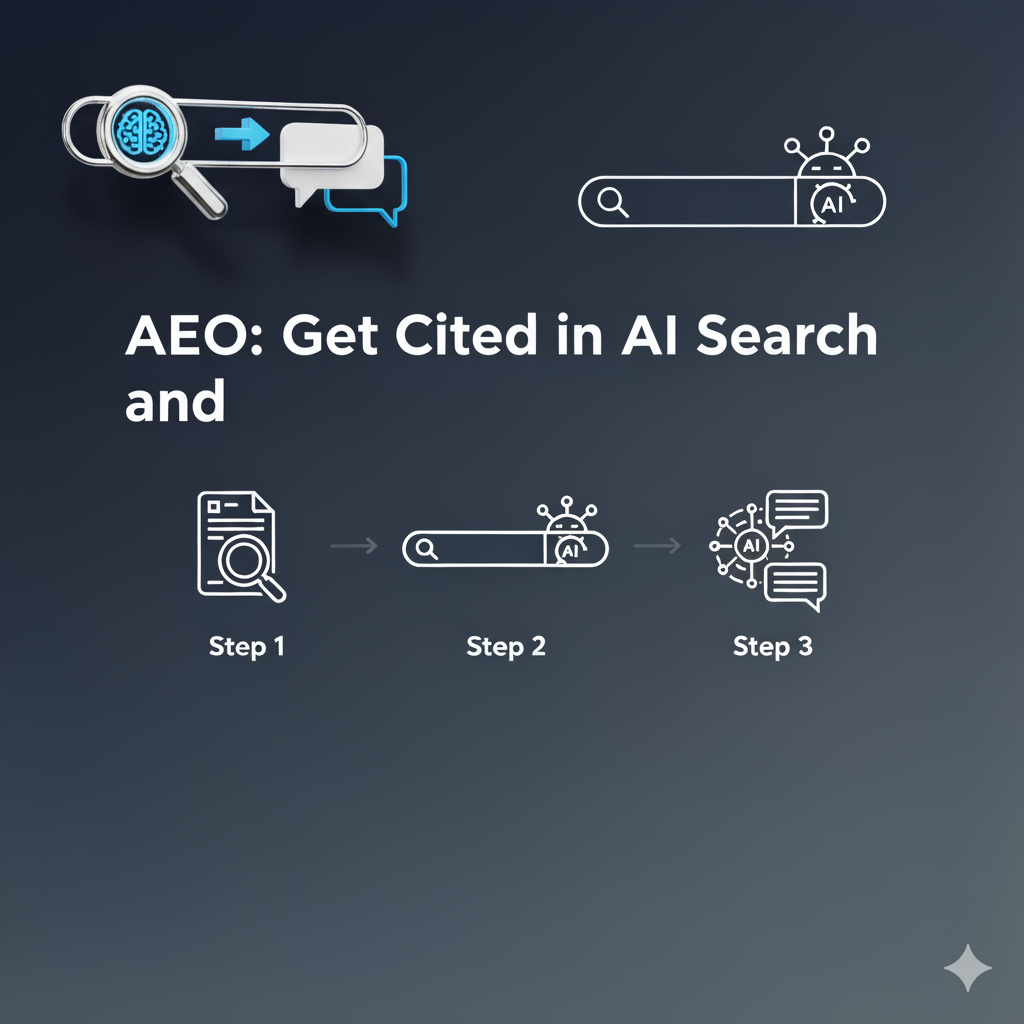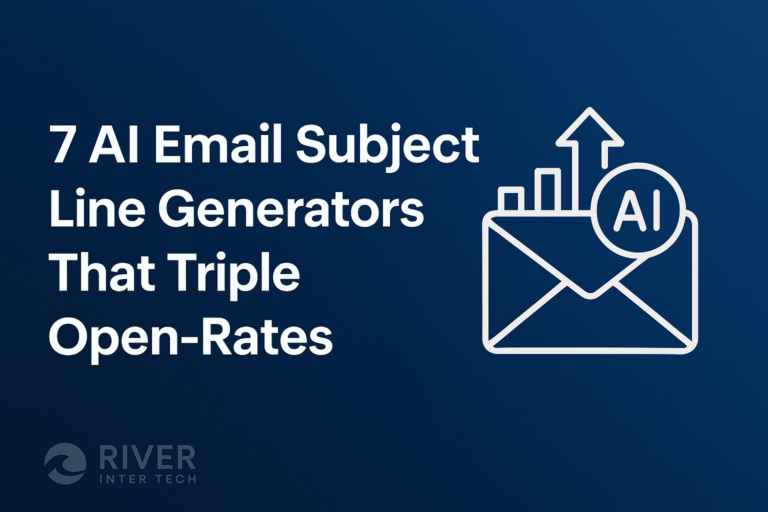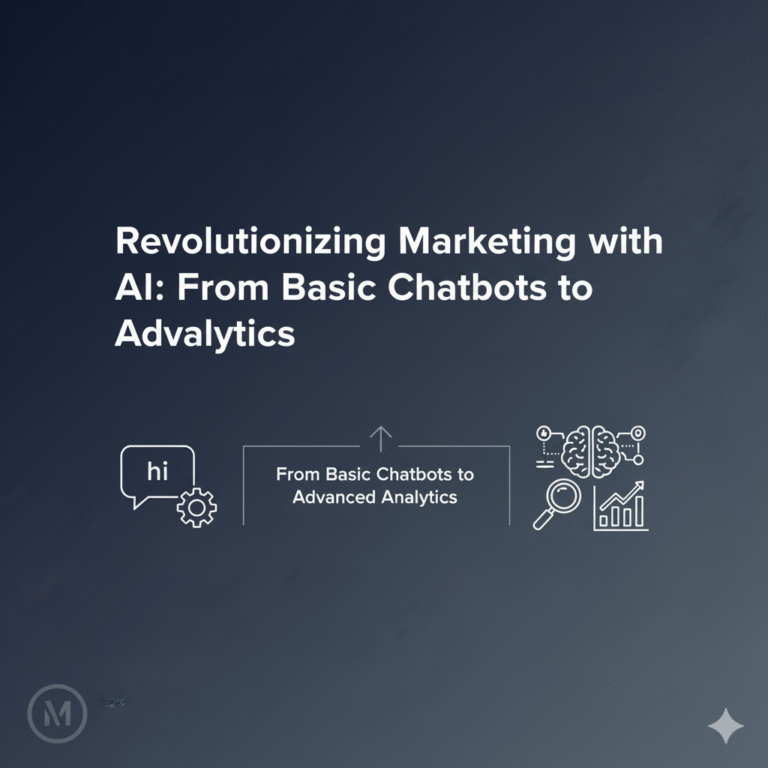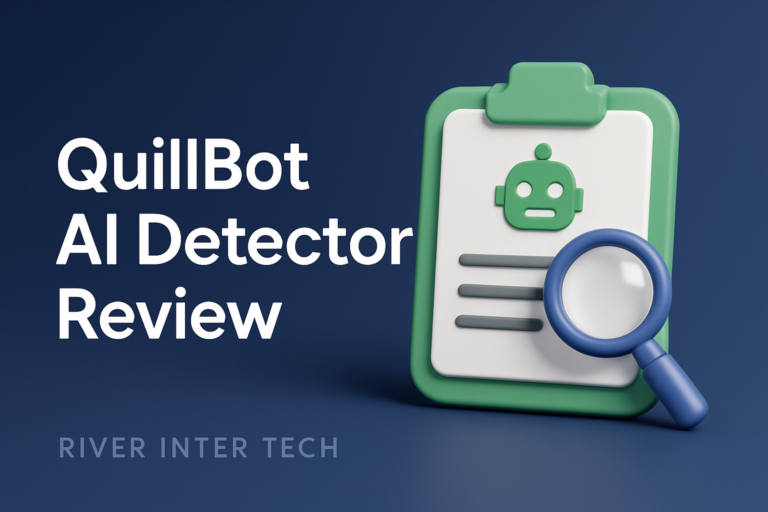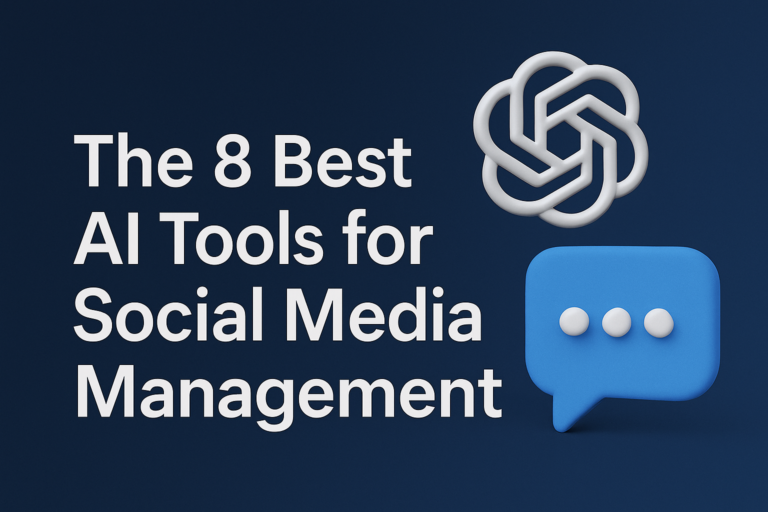AEO Step-by-Step: Get Cited in AI Overviews and Chatbots
Open a search page today and you will see answers before any website links. These answers are created by AI pulling information from different sites. This changes how people find what they need and how websites get visitors.
If your content does not show up in these answers, people may never see your work. The rules of search have shifted. It is not just about links or graphics anymore. Now, AI picks clear, direct, and useful information.
When you know how these AI overviews work, you can make your content easy to understand and trustworthy. This boosts your chance of being featured at the top. AEO matters because it puts your ideas and your business in front of more people.
If you pay attention to this trend, you keep your audience and can grow, even as search changes.
What Is AEO (Answer Engine Optimization)?
AEO means Answer Engine Optimization. It is a way to prepare your content so AI tools, search engines, and chatbots can understand and use it as a trusted source. Unlike old SEO that focused on repeating keywords, AEO is about being clear and direct.
When you write for AEO, your goal is to answer questions with no confusion. Use simple words, skip jargon, and give examples or sources to make your answer strong. AI looks for these things when showing answers.
With AEO, you help both machines and people. You show why your answers deserve trust. This builds a name for quality and authority. AEO is not just about ranking, but about being the trusted source for answers.
The better you follow AEO, the more likely AI will cite your work.
How AI Picks What to Show
AI does not pick answers by chance. It scans many websites to find content that is clear, direct, and backed by facts. It looks for the best answer, not just the first. AI wants proof you know your topic.
It favors lists, direct answers, and information that is easy to quote. Use headings that ask a question and answers that follow right after. Add sources and expert opinions when you can.
AI prefers content that is valuable, easy to read, and written by someone who knows the topic. Focus on these and use structured answers and question clusters to help your site rank higher in AI-powered searches and overviews.
How to Make Your Content Citable by AI
Start with your main point right at the top. If someone only reads two lines, they should know your topic. Give the answer first, then explain with more details.
Use headings that sound like real questions people search for, such as “Why does AI pick certain answers?” or “How do I add schema to my site?” Use bullet points and numbered lists so AI can grab and use your answer easily.
If your paragraphs are too long, both people and bots may miss your point. Break up text, use bold for key ideas, and summarize at the end of each section. Write so anyone can understand your words.
The easier you make it for AI, the more likely your answer appears on top. Keep your info up to date and fix mistakes fast. Make your content match what people search for, especially in FAQs, by adding schema and keeping content fresh.
Build Authority and Trust
To be cited by AI, show you are a reliable source. Put your name and your role at the top or bottom. Add a short statement about your experience or why people can trust your answer.
Always link to strong sources for facts or stats. If you update an article, add the date so people know it is current. Authority comes from showing your work, linking to trusted sites, and being open about sources.
Be honest in your answers. If you do not know, say so and guide people to other resources. This builds trust with both AI and readers over time and strengthens your E-E-A-T signals.
Use Schema Markup
Schema markup is a small code you put on your page. It helps search engines and AI tools understand your content. You do not need to code. Most website platforms let you add schema with a few clicks.
Schema tells AI, “This is a question and answer,” or “This is a list of steps.” There are types like FAQ, How-to, and Review. With the right schema, your content is easier for AI to find and use.
Test your schema markup with Google’s Rich Results Test to make sure it works. Schema does not guarantee to be picked, but it gives you a better chance. It also boosts your credibility and helps with entity optimization.
Examples of Good Formats for AI
- Q&A style: Start with a common question and give a short, direct answer.
- Step-by-step lists: For guides or processes, use one line for each step.
- Numbered lists: Show benefits, features, or a sequence of actions.
- Summaries: Use a table or checklist at the end for topics with lots of detail.
- Key facts box: Highlight the most important info in a simple box.
Make sections easy for both people and machines to scan. Avoid big blocks of text. Break ideas into small parts.
These formats help AI quickly pick and share your info. This increases your chances of being featured in overviews and topic clusters.
How to Cite AI in Your Content
If you use AI to help create or support your content, always say so. When the info comes from a chatbot or AI tool, include its name and when you used it. For example, write “Based on insights from ChatGPT (prompt as of June 2024).”
Tell readers the question you asked the AI. This shows your process and builds trust. Search engines and people value honesty. If you use AI to check facts, mention it in your sources.
Being open makes your content stand out as reliable. This helps when AI tools choose which answers to show.
Keep Your Content Updated
AI and search change fast. What worked last year may not work today. Check your important pages each month.
Update dates, check facts, and add new research. If stats or examples are old, update them. Use Google Search Console to track if your pages appear in featured spots or overviews.
Set reminders to review your articles every two or three weeks, if your topic changes a lot. If your content is not picked up anymore, check what has changed and update your format or keywords.
Keeping your content current shows people and AI you care about accuracy. This makes it more likely you will be cited in the future, and it highlights freshness.
Get Ready for the Future
AI in search is here to stay. It is how people find answers now. If you focus on clear questions and answers, use trusted sources, and update often, your content will do well in the future.
This AEO strategy helps search engines and people find and trust your work. The time you invest now will help your content appear in top spots as AI grows.
As digital search changes, you can grow your audience and protect your site’s visibility. Start now, adapt as you learn, and your work will become more visible in AI-powered search.
FAQs
How do I know if my content is cited by AI overviews?
Use analytics tools to watch for new traffic spikes and check if your content appears as a featured snippet or in AI summaries. Google Search Console is a good start.
What’s the best way to write an FAQ for AEO?
Make each answer short and clear, using two or three sentences. Use simple words so anyone can understand.
Should I use AI to help write my content?
Yes, but always check the facts and give credit to your sources. Let AI help draft, but review and edit yourself.
How often should I update my content?
Check and refresh important pages at least once a month. If your topic changes often, update more.
What should I avoid when optimizing for AEO?
Do not fill your content with keywords or make it sound generic. Focus on value, clarity, and keeping information current.

